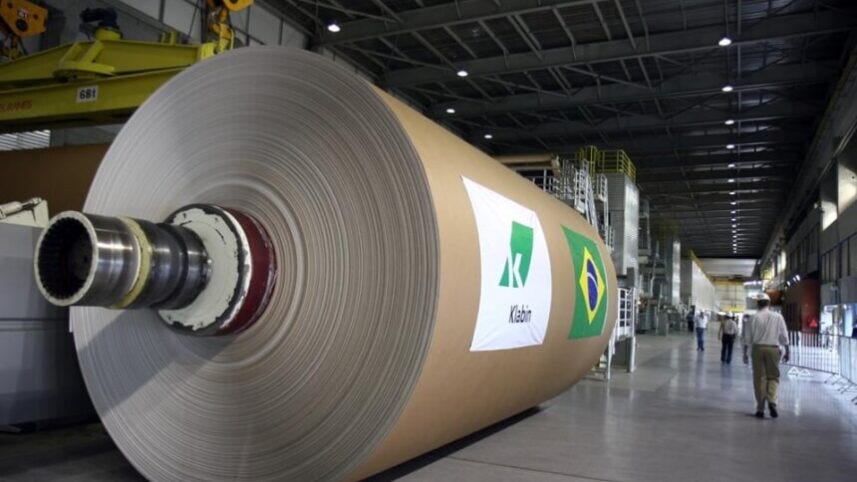Klabin: Time to Buy Brazil's Largest Packing Paper Company?
B3: KLBN3, KLBN4, KLBN11; OTC US: KLBAY
Today we are going to talk about a well-known company in the Packing sector: Klabin (B3: KLBN3, KLBN4, KLBN11; OTC US: KLBAY).
Who will I be a partner with?
The company has common shares (KLBN3), preferred shares (KLBN4) and Units (KLBN11) listed on B3. In addition, it has ADRs listed on NYSE (KLBAY). The common and preferred shares pay the same dividend per share. The most liquid is KLBN11, followed by KLBN4 and then KLBN3. Each Unit is made up of 1 common + 4 preferred shares.
The company is controlled by the Klabin and Lafer families through 2 holding companies: Klabin Irmãos e Cia (45.41% of common shares) and Niblak Participações S.A. (6.82% of common shares). Therefore, they own 52.23% of the common shares.
The following are relevant minorities:
Monteiro Aranha S.A. (2.61% of common shares and 4.98% of preferred shares). Investment holding company created by Alberto Monteiro de Carvalho e Silva and Olavo Egydio de Souza Aranha Junior.
Luiz Barsi Filho (estimate: 0.21% of common shares and 2.54% of preferred shares). Billionaire Brazilian investor.
What is Klabin?
Founded in 1899 and listed on the Stock Exchange since 1979, Klabin is the largest producer, exporter and recycler of packaging paper in Brazil and one of the largest integrated paper producers in Latin America.
It is also the only Brazilian company to simultaneously sell short fiber pulp (eucalyptus) and long fiber pulp (pine).
Production consists of various types of paper, packaging and cellulose in 22 factories in Brazil and one in Argentina, supplying the domestic and international market.
Business units:
Forestry: they cultivate forests mainly to supply Klabin’s operations
Cellulose: they manufacture cellulose to supply the tissue, graphic paper, special paper, packaging paper, diapers, and absorbent markets.
Papers: they manufacture coated cards used in the production of paper packaging for consumer products, mainly in the food sector.
Conversion: they manufacture corrugated cardboard packaging, widely used in the food industry, and industrial bags, widely used in construction.
Basically, half of Klabin's EBITDA comes from cellulose and half from paper and packaging.
My Point of View:
Flexible and integrated model, from forest to packaging, allows focus to be placed on the product with the highest return at each market moment.
Dollarized business works as a hedge for a portfolio of domestic Brazilian stocks.
The packaging segment, especially food (non-discretionary consumption), provides good cash flow predictability.
Exceptional production cost by world standards due to the location of the forests.
Good debt management, which "is part of Klabin's DNA", as Barsi says.
Long-term strategic planning includes a merger with a large company in the sector in Latin America, helping Klabin to consolidate itself in the region. It is possible to notice in the results materials of recent years a certain marketing apparently to "decorate the bride".
There was already a governance issue a few years ago with the history of royalties for the use of the Klabin name, but in my opinion this kind of issue won't happen again because of the merger plan.
EBITDA has been growing for 13 years, more than 10% p.a. on average, passing Dilma's impeachment and the pandemic with flying colors, something rare in Brazilian companies.
Good dividend payer. Increasing dividends over the years. Payout of 15% to 25% (average 20%) of EBITDA. Quarterly payments.
The completion of the Puma II project will boost EBITDA, reducing leverage and fattening the pockets of those who receive dividends.
Is it cheap?
After all, is it to buy this stock or not?
What is the price to buy and sell KLBN4 (or KLBAY) after all?
I'll show you all the rationale, in detail.
Let's go.




